|
Characters:
Heathcliff - He is a bitter man tormented by the
loss of his love Catherine and the abuse of his stepbrother, Hindley. He gains the Earnshaw inheritance and sets out
to ruin Edgar Linton.
Catherine Earnshaw - She falls in love with Heathcliff,
marries Edgar Linton because of financial and social advantages and dies after giving birth to Catherine Linton.
Hindley Earnshaw - He is the son and heir to the
Earnshaw inheritance but abuses Heathcliff and seeks to degrade Heathcliff for winning the love of Mr. Earnshaw.
Hareton Earnshaw - He is the son of Hindley, yet
cared for by Heathcliff. In his plot to ruin Hindley and Edgar, he becomes like Heathcliff but falls in love and marries
Catherine Linton.
Isabella Linton - She is the naive sister of Edgar
and the wife of Heathcliff but later runs off to London and remains in hiding after Heathcliff throws a knife at her.
Linton Heathcliff - He was born in London but his
mother died and he was given to his Uncle, but Heathcliff later get custody of him and marries him off to Little Cathy.
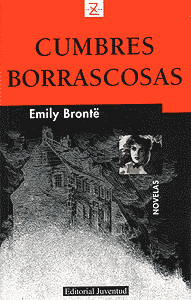
|
| CumbresBorrasCosas1992 |
Three main settings:
Wuthering Heights - It was once the estate of the
Earnshaws but falls into the hands of Heathcliff and mirrors his cold and grim state of mind.
Thrushcross Grange - It is the ostentatious home
of the Lintons and impresses Catherine and transforms her into a lady.
London - Isabella Heathcliff runs there after having
a knife thrown at her head. There she gives birth to Linton Heathcliff.
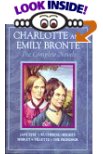
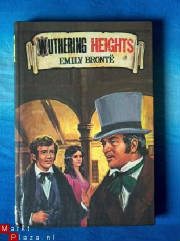
One paragraph plot outline:
Heathcliff was a waif taken in by Mr. Earnshaw and his household.
He grows bitter as he grows older falling in love with and losing Catherine. He seeks to destroy Hindley and Edgar Linton
blaming them for losing Catherine. He believe that Hindley caused his loss of Catherine by degrading him. Through
her marriage to Edgar Linton, Catherine becomes introduced to a world of materialism. She dies and her death fuels Heathcliff’s
rage against Hindley and Edgar. However, soon after, Hindley also dies and the Earnshaw estate and Hareton fall into
the hands of Heathcliff. Later, Heathcliff wins the custody of his son, Linton. He forces Cathy to marry Linton
and plans to steal the Grange from Edgar through Linton. Both Linton and Edgar dies and the Grange goes to Heathcliff
who now owns both Wuthering Heights and Thrushcross Grange. Heathcliff marries Hareton to Cathy trying to make Hareton
fit his image. Cathy is loving to Hareton and when Heathcliff dies, both Thrushcross Grange and Wuthering Heights go
to them.
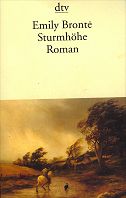
|
| Germany |
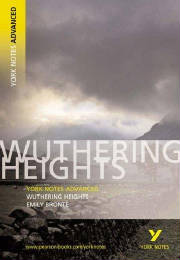
|
| YorkNotes |
Symbols and references:
Wuthering Heights - This house symbolizes anger,
hatred and jealousy. As in the shown by the name, there is lot of tension within that house. The Heights
mirror the conditions of its inhabitants, especially Hindley and Heathcliff.
Thrushcross Grange - This house contrasts with
Wuthering Heights since it has the appearance one would expect from a pleasing worldly lifestyle. This appearance of
this house also symbolizes the feelings of the inhabitants. Like the house, the Lintons are materialistic and superficial.
Hareton and Cathy - These two symbolize Heathcliff
and Catherine showing what they could have become if their situations were slightly different. Both couples live in
similar situations and allow for the comparison.
Narrator · Lockwood,
a newcomer to the locale of Wuthering Heights, narrates the entire novel as an entry in his diary. The story that Lockwood
records is told to him by Nelly, a servant, and Lockwood writes most of the narrative in her voice, describing how she told
it to him. Some parts of Nelly’s story are narrated by other characters, such as when Nelly receives a letter from Isabella
and recites its contents verbatim.
Point of view · Most
of the events of the novel are narrated in Nelly’s voice, from Nelly’s point of view, focusing only on what Nelly
can see and hear, or what she can find out about indirectly. Nelly frequently comments on what the other characters think
and feel, and on what their motivations are, but these comments are all based on her own interpretations of the other characters—she
is not an omniscient narrator.
Tone · It
is not easy to infer the author’s attitude toward the events of the novel. The melodramatic quality of the first half
of the novel suggests that Brontė views Catherine and Heathcliff’s doomed love as a tragedy of lost potential and wasted
passion. However, the outcome of the second half of the novel suggests that Brontė is more interested in celebrating the renewal
and rebirth brought about by the passage of time, and the rise of a new generation, than she is in mourning Heathcliff and
Catherine.
Tense · Both
Lockwood’s and Nelly’s narrations are in the past tense.
Setting (time) · The
action of Nelly’s story begins in the 1770s; Lockwood leaves
Yorkshire in 1802.
Setting (place) · All
the action of Wuthering Heights takes place in or around two neighboring houses
on the Yorkshire moors—Wuthering Heights and Thrushcross Grange.
Protagonists · Heathcliff,
Catherine
Major conflicts · Heathcliff’s
great natural abilities, strength of character, and love for Catherine Earnshaw all enable him to raise himself from humble
beginnings to the status of a wealthy gentleman, but his need to revenge himself for Hindley’s abuse and Catherine’s
betrayal leads him into a twisted life of cruelty and hatred; Catherine is torn between her love for Heathcliff and her desire
to be a gentlewoman, and her decision to marry the genteel Edgar Linton drags almost all of the novel’s characters into
conflict with Heathcliff.
Rising action · Heathcliff’s
arrival at Wuthering Heights, Hindley’s abusive treatment of Heathcliff, and Catherine’s first visit to Thrushcross
Grange set the major conflicts in motion; once Heathcliff hears Cathy say it would “degrade” her to marry him,
the conversation between Nelly and Cathy, which he secretly overhears, drives him to run away and pursue his vengeance.
Climax · Catherine’s
death is the culmination of the conflict between herself and Heathcliff and removes any possibility that their conflict could
be resolved positively; after Catherine’s death, Heathcliff merely extends and deepens his drives toward revenge and
cruelty.
Falling action · Heathcliff
destroys Isabella and drives her away, takes possession of young Linton, forces Catherine and Linton to marry, inherits Thrushcross
Grange, then loses interest in the whole project and dies; Hareton and young Catherine are to be engaged to be married, promising
an end to the cycle of revenge.
Themes · The
destructiveness of a love that never changes; the precariousness of social class
Motifs · Doubles,
repetition, the conflict between nature and culture
Symbols · The
moors, ghosts
Foreshadowing · Lockwood’s
initial visit to Wuthering Heights, in which the mysterious relationships and lurking resentments between the characters create
an air of mystery; Lockwood’s ghostly nightmares, during the night he spends in Catherine’s old bed, prefigure
many of the events of the rest of the novel.
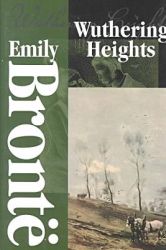
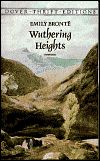
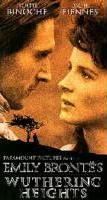
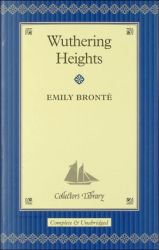
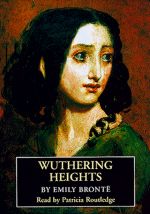
|
| Audio Book |

|
| Audio Book |
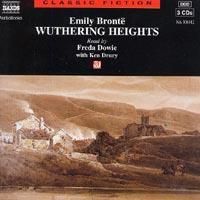
|
| 3 CD's |
|

